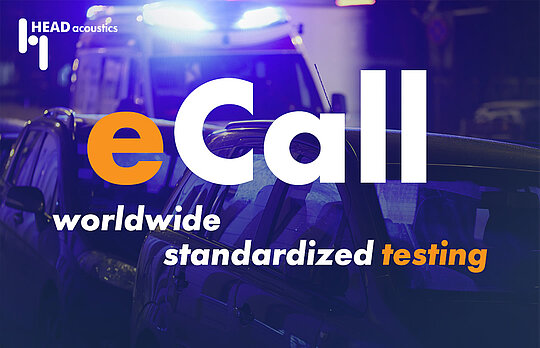eCall - Worldwide standardized testing
eCall systems shorten the response time of emergency services and thus increase the chances of accident victims surviving.
The automatic emergency call system is installed in vehicles (IVS; in-vehicle system) and automatically sends an emergency call to the emergency call center (PSAP; Public Service Answering Point) in the event of an accident when the airbag is deployed or the emergency call button is pressed.
How does eCall work?
1. automatic emergency call: In the event of a serious accident, a Minimum Set of Data (MSD) with important information such as GPS data and vehicle status is sent to the emergency call center.
2. audio connection: After sending the MSD, an audio connection is automatically established between the vehicle and the emergency call center to enable direct communication.
HEAD acoustics: unique measurement technology and acoustic tests for eCall
HEAD acoustics enables the determination of speech communication quality for eCall systems in vehicles according to the tests specified in ITU-T recommendation P.1140. These include specific tests for transmission from the vehicle, reception into the vehicle, under echo and double talk conditions, as well as for the transmission of background noise under real conditions.
The Chinese standard GB 45672-2025 (GB/T 45314:2025, Chapter 5) will make the use of standardized tested eCall systems in vehicles mandatory in China as of 2027 the latest. There are also changes about to come in the European Union, as CEN EN 17240:2024 will make ITU-T P.1140 mandatory here - approximately also in the course of 2027. The goal is to enhance interoperability between the IVS in the vehicle and the PSAP contact and to ensure operation in 4G/5G mobile networks. In the test, these networks can be simulated with various radio testers.
HEAD acoustics is your reliable partner for these upcoming requirements for new eCall systems in China and worldwide.




